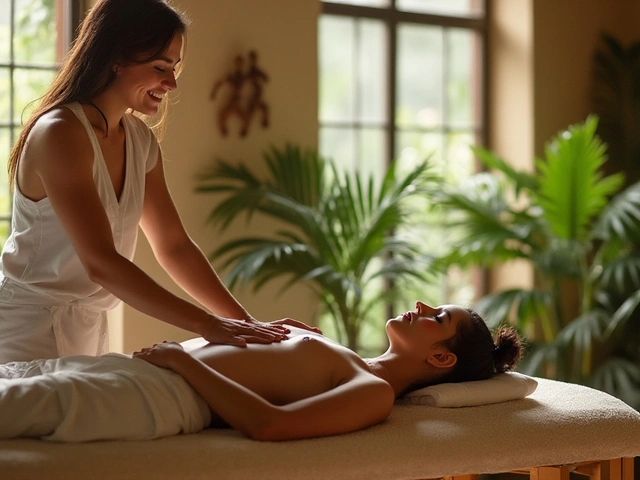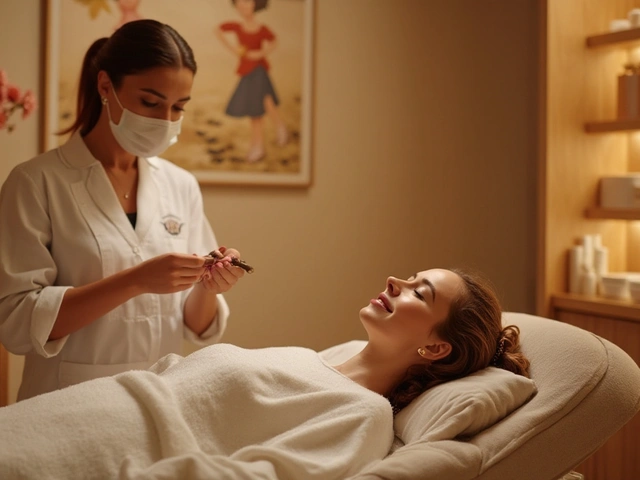Filipino wellness tradition: Hilot and practical healing tips
Hilot isn't a trendy spa add-on—it's a living Filipino wellness tradition used for generations by midwives, healers, and families. If you're curious about real, hands-on care that blends massage, bone-setting, and herbal wisdom, hilot is a straight-up example of practical healing that people still use every day.
What hilot actually is
Hilot is a mix of techniques: long, flowing massage to move blood and lymph; joint checks and gentle adjustments to restore alignment; and herbal oils or compresses to reduce inflammation. Sessions can be calming like a spa massage or more focused like physical therapy, depending on what you need. Practitioners read the body by touch and treat tension, postural problems, digestive discomfort, and some childbirth-related issues.
Expect a hands-on approach. A hilot session often starts with a short chat about symptoms and a quick body scan by touch. Then the practitioner uses palms, forearms, and sometimes tools or heated herbal packs. You'll leave with clearer movement and concrete self-care steps you can do at home.
How to choose and prepare
Look for someone with clear experience, client references, or community recommendations. In Filipino communities, word-of-mouth still matters—ask friends or check local groups. If a practitioner claims to cure everything instantly, be cautious. Good hilot is steady, sensible, and tailored to your body.
Before your session, drink water, wear loose clothes, and note whether you have any recent injuries, surgeries, or health conditions. Tell the practitioner about blood pressure, pregnancy, or medication—some techniques or herbs aren't safe in every situation. If you have a medical issue, ask how hilot fits with your doctor’s plan rather than replacing it.
Want to try a basic self-care move now? Use slow, firm strokes along sore muscles toward the heart to support circulation. Apply a warm herbal compress (wrapped towel) for ten minutes to relax tight areas. These simple actions mirror hilot principles and often give fast relief.
Hilot sits alongside other Filipino and regional practices like herbal medicine and traditional birth care. It pairs well with physical therapy and modern massage when used sensibly. If you enjoy hands-on, body-aware care that includes practical tips you can repeat at home, hilot is worth a try.
Curious for more? Read detailed guides like “Rediscovering Hilot: The Ancient Filipino Healing Art Explained” and our “Hilot Massage” articles for step-by-step techniques, cultural background, and what to expect in a real session. Try one session, notice how your body responds, and ask the practitioner for follow-up moves you can do between visits.
Final tip: honor the tradition but stay sensible. Use hilot for mobility, tension, and comfort—pair it with medical advice for anything serious. When done right, this Filipino wellness tradition gives simple, hands-on tools that help your body move and feel better without drama.

Hilot: A Filipino Wellness Tradition Worth Trying
In today's discussion, we're digging into a unique wellness tradition, which is close to my heart – Hilot. This beautiful aspect of Filipino culture is a natural healing method that I strongly believe is worth trying. You will gain fascinating insights about this traditional alternative therapy, how it's performed, its richness in history, and the benefits you could reap from it. Join me in the captivating world of Hilot and let's celebrate the art of this Filipino wellness tradition together.
Categories
- Health and Wellness (148)
- Alternative Therapies (86)
- Massage Therapy (40)
- Travel and Culture (15)
- Beauty and Skincare (9)
- Holistic Health (8)
- Health and Fitness (5)
- Spirituality (5)
- Other (2)
- Personal Development (2)
Popular Articles



